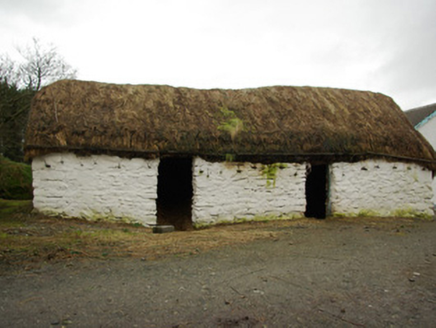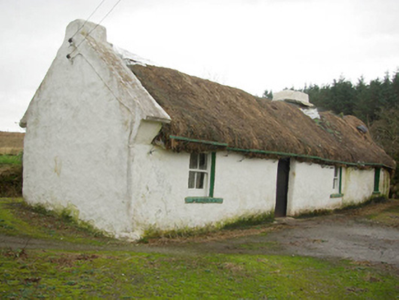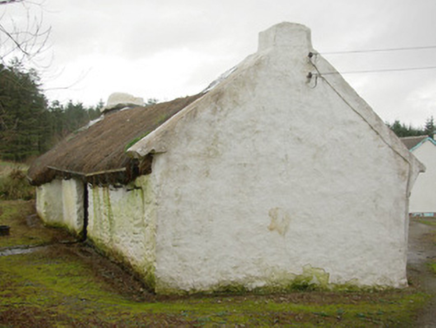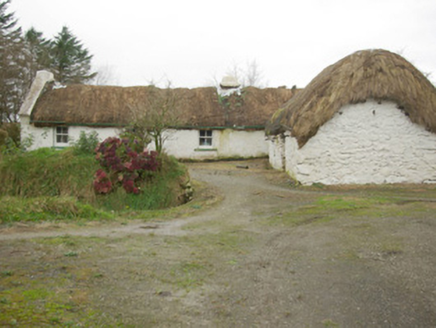Survey Data
Reg No
40908301
Rating
Regional
Categories of Special Interest
Architectural, Technical
Original Use
House
Date
1840 - 1880
Coordinates
180297, 385850
Date Recorded
29/11/2007
Date Updated
--/--/--
Description
Detached four-bay single-storey vernacular house, built c. 1860, having bed outshot to rear elevation (north-west). Now uninhabited. Pitched rope-and-peg thatched roof having two lime rendered chimneystacks (one to the south-west gable end and one to the north-east side of centre) and with pronounced raised limewashed verge to the south-west gable end. Metal pegs below eaves level. Limewashed roughcast rendered finish over rubble stone construction. Square-headed window openings with painted cut stone sills, and having two-over-two pane horned timber sliding sash windows. Square-headed door opening (offset to the south-west side of centre) having timber sheeted door. Set back from small country road on an elevated sloping site in the rural countryside to the south-east of Ardara. Single-storey outbuilding to north/north-east of house having pitched rope-and-peg thatched roof, rubble stone walls, and square-headed doorways. Approach avenue to house from the south-east and forecourt to front of house.
Appraisal
Despite being now uninhabited, this charming thatched vernacular house retains its early form and character and is an appealing feature in the rural landscape to the south-east of Ardara. Modest in scale, it exhibits the simple and functional form of vernacular building in Ireland. The integrity and visual appeal of this building is enhanced by the retention of much of its early fabric including timber sliding sash windows. Of particular interest in the survival of the thatched roof, which is now sadly becoming increasingly rare in Donegal. The rounded roof is a typical feature of thatched houses located close to the sea in exposed areas in the north-west of Ireland, while the pegs to the eaves were used to tie ropes (and sometimes nets) over the roof to secure it against the prevailing winds. The pronounced raised verge to the gable end gives this particular vernacular house a distinct appearance. The form of this building having chimneystacks to the south-west gable end suggests that this building is of the ‘direct entry’ type that is characteristic of the vernacular tradition in north-west Ireland. The location of the chimneystacks and the main doorway also indicates that this building was extended to the north-east at some stage. The irregular-spacing of the openings to the front façade lends it an appealing vernacular character. The blank rear elevation is a typical feature of many small-scale vernacular dwellings in rural Ireland, while the bed outshot to the rear is a feature that is found on many vernacular buildings in Donegal and was used to house a bed adjacent to the hearth for warmth. This house represents a fine surviving example of a once ubiquitous building type in the rural Irish countryside, and is a valuable addition to the vernacular heritage of County Donegal. The survival of the thatched rubble stone outbuilding to site adds considerably to the context and setting, and is a significant structure in its own right.







